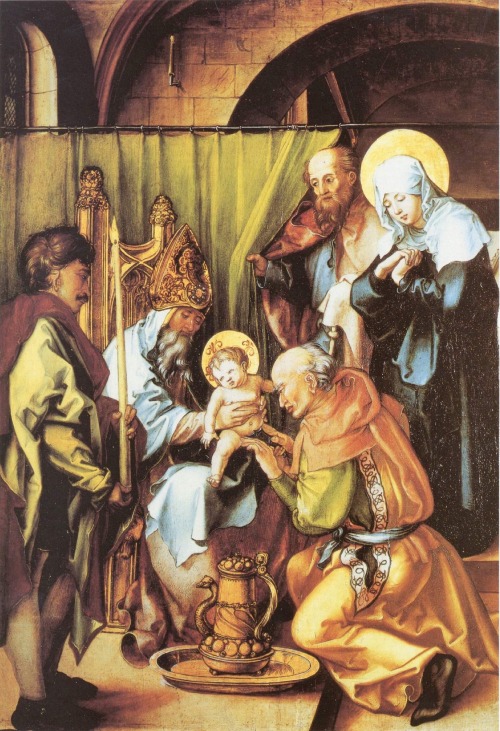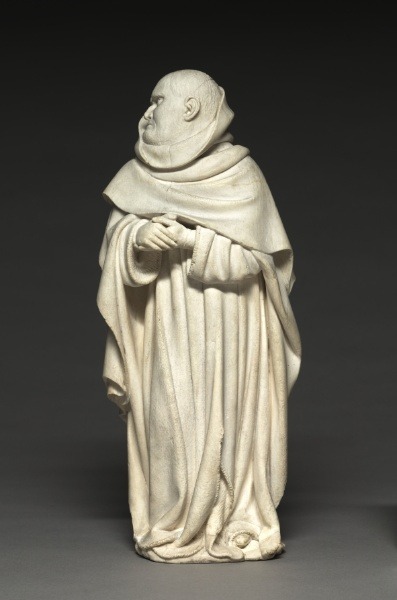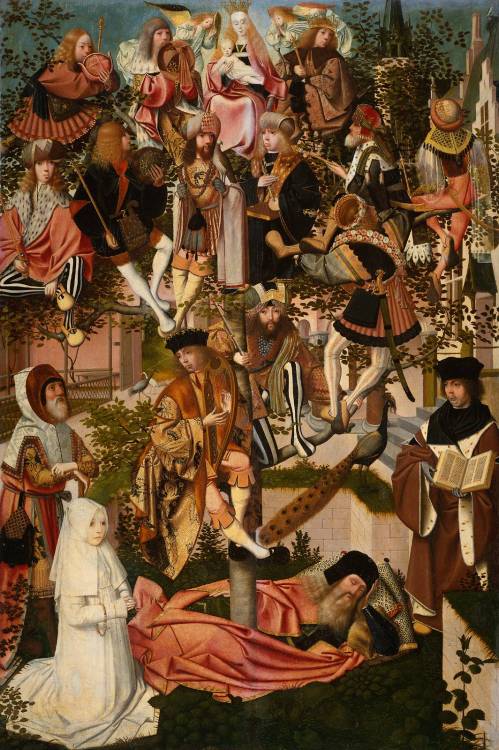#15th century art

The Young St. John the Baptist, Antonio Rossellino, ca. 1470

‘The Four Horsemen of the Apocalypse’ from 'The Apocalypse: Revelation of Saint John the Divine’, Albrecht Dürer (German, 1471-1528), ca. 1498
Woodcut on paper

Portrait of a Young Woman (1480-1485)
Sandro Botticelli (c. 1445-1510)






▪︎ The Little Garden of Love (Der Kleine Liebesgarten).
Date: 1440–1450
Artist: Master of the Gardens of Love (Netherlandish, active in 1440–1450)
Medium: Engraving
Claus de Werve (Netherlandish, 1380-1439)
Mourner from the Tomb of Philip the Bold, Duke of Burgundy
1404-1410
Alabaster
“Throughout most of their history these alabaster mourners have evoked a sense of awe and mystery as well as curiosity and admiration. They were originally arranged in processional order around the sides of the ducal tomb within a marble arcade in the Chartreuse de Champmol. The realistically carved mourners remain the most famous elements from Philip the Bold’s tomb. Carved by Claus de Werve, no two are alike. They retain minute details of costume and features, and the faces of some are nearly portrait-like in their depiction of facial creases and expression, suggesting actual individuals, while the faces of others are partly obscured by their cowls.”
One of three mourners currently in the collection of the Cleveland Museum of Art. Image and description from the Cleveland Museum of Art’s online collection pages (1,2, and 3 (shown here)).
Post link
Claus de Werve (Netherlandish, 1380-1439)
Mourner from the Tomb of Philip the Bold, Duke of Burgundy
1404-1410
Alabaster
“Throughout most of their history these alabaster mourners have evoked a sense of awe and mystery as well as curiosity and admiration. They were originally arranged in processional order around the sides of the ducal tomb within a marble arcade in the Chartreuse de Champmol. The realistically carved mourners remain the most famous elements from Philip the Bold’s tomb. Carved by Claus de Werve, no two are alike. They retain minute details of costume and features, and the faces of some are nearly portrait-like in their depiction of facial creases and expression, suggesting actual individuals, while the faces of others are partly obscured by their cowls.”
One of three mourners currently in the collection of the Cleveland Museum of Art. Image and description from the Cleveland Museum of Art’s online collection pages (1,2 (shown here), and 3).
Post link
Claus de Werve (Netherlandish, 1380-1439)
Mourner from the Tomb of Philip the Bold, Duke of Burgundy
1404-1410
Alabaster
“Throughout most of their history these alabaster mourners have evoked a sense of awe and mystery as well as curiosity and admiration. They were originally arranged in processional order around the sides of the ducal tomb within a marble arcade in the Chartreuse de Champmol. The realistically carved mourners remain the most famous elements from Philip the Bold’s tomb. Carved by Claus de Werve, no two are alike. They retain minute details of costume and features, and the faces of some are nearly portrait-like in their depiction of facial creases and expression, suggesting actual individuals, while the faces of others are partly obscured by their cowls.”
One of three mourners currently in the collection of the Cleveland Museum of Art. Image and description from the Cleveland Museum of Art’s online collection pages (1 (shown here),2, and 3).
Post link
Hans Memling
Last Judgement
1467-71
Oil on panel
Commissioned by Angelo Tani, an Italian banker with the Medici bank in Bruges. The kneeling figure being weighed by St. Michael is believed to be Tommaso Portinari, who took over Tani’s position at the bank in Bruges. Portinari, along with members of his family, can be seen in donor portraits in Hugo van der Goes’s Portinari Altarpiece, c. 1475.
This painting is in the collection of Poland’s National Museum in Gdańsk. Image taken from Wikipedia.
Post link
Circle of Geertgen tot Sint Jans
The Tree ofJesse
1500
Oil on panel
“Pictured here symbolically is Christ’s family tree. It grows out of the sleeping figure of Jesse, forefather of a line of kings that included, according to tradition, Solomon, David, and Jesus. The branches are filled with the kings of Israel, among them King David with his harp. At top, the Virgin is enthroned with the Christ Child on her lap.”
Description and image taken from the Rijksmuseum’s website.
Post link
La Pieta, by Niccolo dell'Arca, in the Santuario di Santa Maria della Vita di Bologna, Bologna, Italy, mid-late fifteenth century. Painted terracotta figures. The figures surrounding the dead Christ are, from left to right, Joseph of Arimathea, Mary Salome (mother of John), the Virgin Mary, John, Mary Cleophas, and Mary Magdalene. Image taken from ARTstor and figural description taken from here.
Post link
Compianto sul Cristo Morto di Niccolò dell’Arca,
Santuario di Santa Maria della Vita di Bologna
Post link











